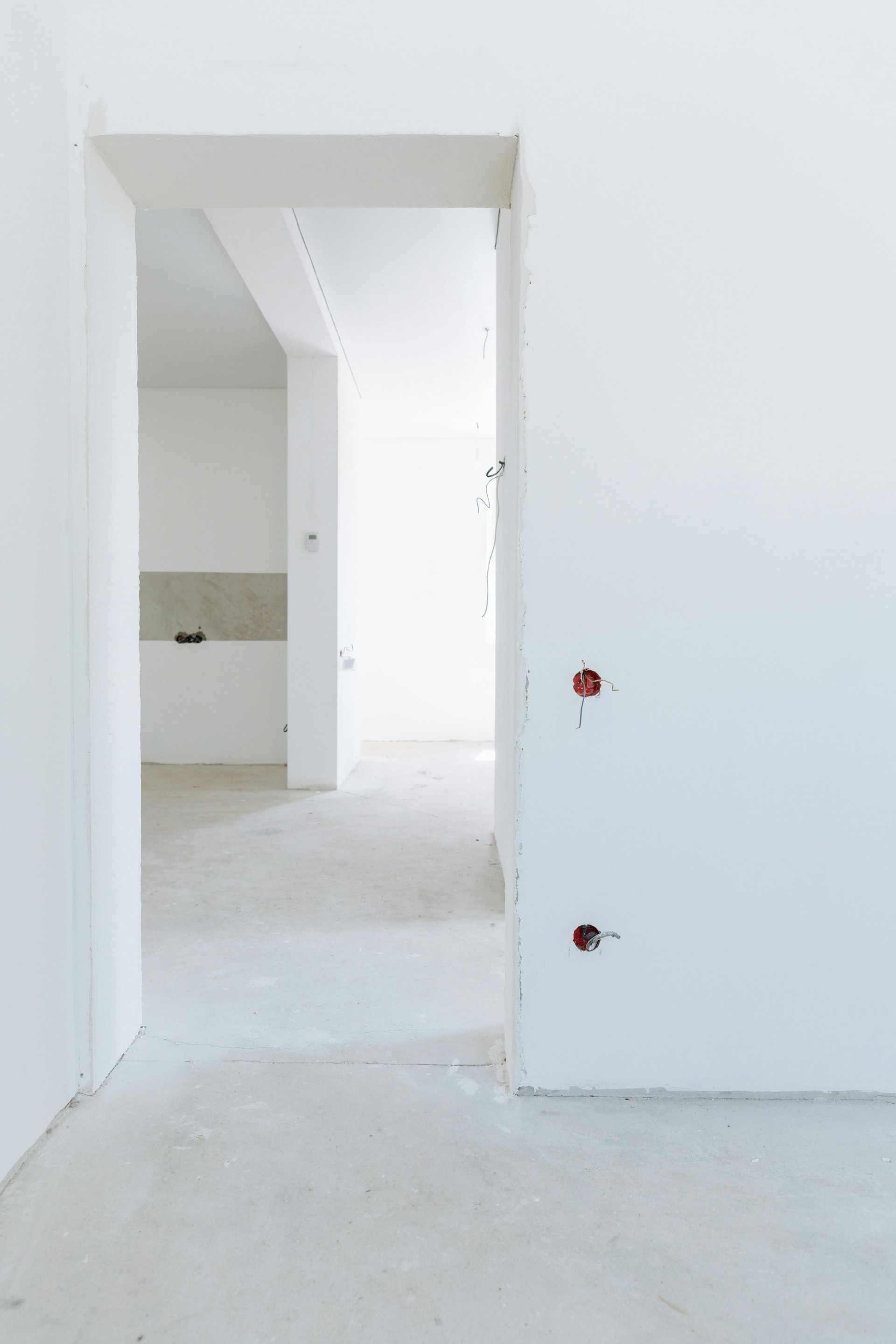Maximizing Small Spaces: Smart Remodeling Ideas for Compact Homes
Maximizing Small Spaces: Smart Remodeling Ideas for Compact Homes
Living in a small home or apartment doesn’t mean sacrificing style or functionality. With the right remodeling strategies, even the tiniest spaces can be transformed into efficient, comfortable, and aesthetically pleasing areas. Whether you're in a studio apartment, a tiny house, or a small family home, maximizing space is key to making the most of your living situation. In this post, we’ll explore smart remodeling ideas that will help you optimize every square foot of your compact home, making it feel larger, more organized, and perfectly tailored to your needs.
1. Embrace Open Floor Plans
Open floor plans have become a hallmark of modern design, and for good reason, especially in small homes. By removing walls between rooms, you can create a more expansive and fluid space that feels larger and more connected. In a small home, eliminating unnecessary barriers between the kitchen, living, and dining areas can create a sense of openness and flow, which helps the space feel less cramped.
- Tip: If you don’t want to remove walls entirely, consider creating open passageways or replacing solid doors with sliding or glass doors to allow light to flow freely through the space.
2. Incorporate Multi-Functional Furniture
In a small home, every piece of furniture needs to pull double duty. Multi-functional furniture pieces can save space while still providing the comfort and utility you need. Look for options like fold-out desks, extendable dining tables, sleeper sofas, and storage ottomans that serve both a functional and aesthetic purpose.
- Examples: A sofa bed that doubles as a seating area and sleeping space, a dining table with built-in storage, or a coffee table that transforms into a desk.
These pieces not only save space but also allow you to keep the design minimal and organized. Some furniture is specifically designed to fit into tight spaces, offering hidden compartments for storage, which is a great way to reduce clutter and keep the space tidy.
3. Maximize Vertical Space
When floor space is limited, think upward. Maximizing vertical space is a smart way to add storage and functionality without taking up valuable square footage. High shelves, tall cabinets, and wall-mounted storage solutions can be used to stow away items that you don’t need immediate access to, keeping your home organized and decluttered.
- Tip: Use wall-mounted floating shelves or cabinetry to store books, plants, or decor. Wall hooks or racks can also be used to hang coats, bags, or accessories, keeping them off the floor.
4. Use Built-In Storage Solutions
Custom-built storage can transform an underutilized area into a functional space. Consider built-in solutions for your home’s nooks and crannies, such as under-stair storage, built-in bookcases, or cabinets around your bed or sofa. These built-ins not only help organize your space but also provide a streamlined, cohesive look that eliminates the need for bulky, freestanding furniture.
- Examples: A bed with drawers underneath, a bench with hidden storage, or custom shelving around windows and doorways.
Built-in furniture helps you utilize every available inch without making the space feel crowded or overstuffed. The more you can integrate storage seamlessly into the design, the less cluttered the space will feel.
5. Maximize Natural Light
Natural light can make a small space feel airy, open, and welcoming. One of the most effective ways to visually expand a small space is by allowing as much light in as possible. This can be achieved by using light-colored paint, removing heavy curtains, or installing larger windows where possible. Even if you can't make major changes, small tweaks can make a significant difference in how bright and open the room feels.
- Tip: Consider installing mirrors strategically to reflect light throughout the room. Large mirrors on the wall opposite windows can amplify natural light, creating the illusion of more space.
6. Use Light, Neutral Colors
Light and neutral colors can make a small room feel larger by reflecting more light and creating an open atmosphere. Opt for soft whites, light grays, pastels, or pale earth tones to keep the space feeling bright and airy. While bold colors can be used for accent pieces, it's often best to keep walls and large furniture pieces in light shades to avoid overwhelming the space.
- Tip: When working with small rooms, stick to a simple color palette to keep the space feeling cohesive and uncluttered. Accent walls or pops of color can add personality without making the room feel cramped.
Incorporating textures, like light wood or soft fabrics, also helps break up the monotony of a neutral color scheme, giving the space a dynamic yet relaxed feel.
7. Choose Furniture with Smaller Profiles
When furnishing a small space, opt for furniture that has a slimmer profile. Oversized sofas and bulky chairs can make a room feel crowded and difficult to navigate. Instead, choose pieces that are scaled down, such as a smaller loveseat, a narrow dining table, or a compact coffee table. This ensures that the room feels spacious and doesn’t feel weighed down by heavy furniture.
- Examples: A sleek, low-profile sectional or a slim console table instead of a bulky sideboard.
These furniture choices help make the space feel larger while still allowing for the functionality you need. Look for furniture that is designed for small spaces, which is often built with proportions in mind and includes clever storage solutions.
8. Consider Open Shelving for Kitchens and Bathrooms
Open shelving is a trendy yet practical design choice for kitchens and bathrooms, particularly in small spaces. Instead of traditional closed cabinetry, open shelves can be used to store everyday items like spices, dishes, or toiletries in a visually appealing and accessible way. It’s a great way to make the most of vertical space while also adding a sense of openness.
- Tip: Use matching baskets or storage containers to keep open shelves looking organized and avoid the cluttered, chaotic look that open shelving can sometimes create.
For kitchens, try using shelves to store pots, pans, and kitchen gadgets, while in bathrooms, use them to display towels, jars, or bath products.
9. Invest in Sliding Doors
Traditional swinging doors take up valuable space in small rooms, especially in tight areas like bathrooms or bedrooms. Sliding doors are a fantastic alternative, as they don’t require clearance for swinging open. A sliding door can separate spaces without interrupting the flow of the room or taking up precious floor space.
- Tip: Consider barn-style sliding doors, glass partitions, or pocket doors, depending on your style and privacy needs. These options can add character while improving the functionality of your space.
Sliding doors can be used for bedrooms, bathrooms, or closets and are a practical way to save room without sacrificing style.
10. Declutter and Organize
One of the simplest and most effective ways to maximize a small space is by decluttering. Keep surfaces clear of unnecessary items, and organize belongings into categories that make them easy to access and store. Use storage containers, bins, or drawer dividers to keep things neatly tucked away and avoid creating visual chaos.
- Tip: Consider using vertical organizers or hooks inside closets and cabinets to keep everything in its place and make the most of available space.
A well-organized space feels much larger and more inviting, so be diligent about regularly purging items that are no longer needed or used.
11. Transform Spaces with Custom Designs
If you’re able to make significant changes, custom designs can make a big impact in a small space. Custom built-ins, tailored furniture, or unique design features can help maximize every square inch. A designer or contractor can create personalized solutions, such as multi-purpose furniture or custom shelving, that meet your specific needs and fit perfectly into your space.
- Examples: A fold-down desk that turns into a wall-mounted unit, a murphy bed that folds up during the day, or custom cabinetry that fits snugly into odd-shaped spaces.
Custom pieces allow you to optimize the layout and function of your space while ensuring that every detail is considered.
Conclusion
Maximizing a small space requires a combination of thoughtful design, smart remodeling choices, and an understanding of how to use every inch of space effectively. From multi-functional furniture and built-in storage to light colors and vertical shelving, there are many ways to make compact homes feel larger and more functional. The key is to be intentional about your design decisions, focusing on organization, functionality, and style. With these smart remodeling ideas, you can transform your small space into a comfortable, efficient, and aesthetically pleasing home that works for your lifestyle.




